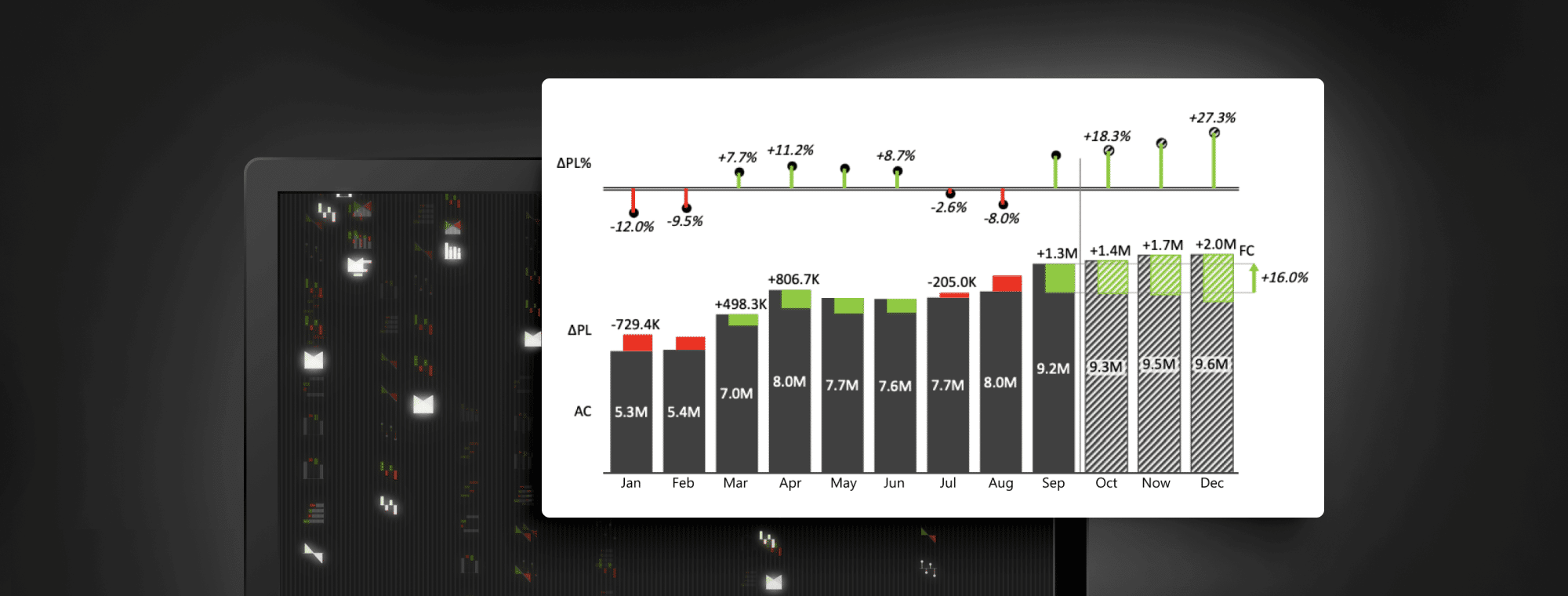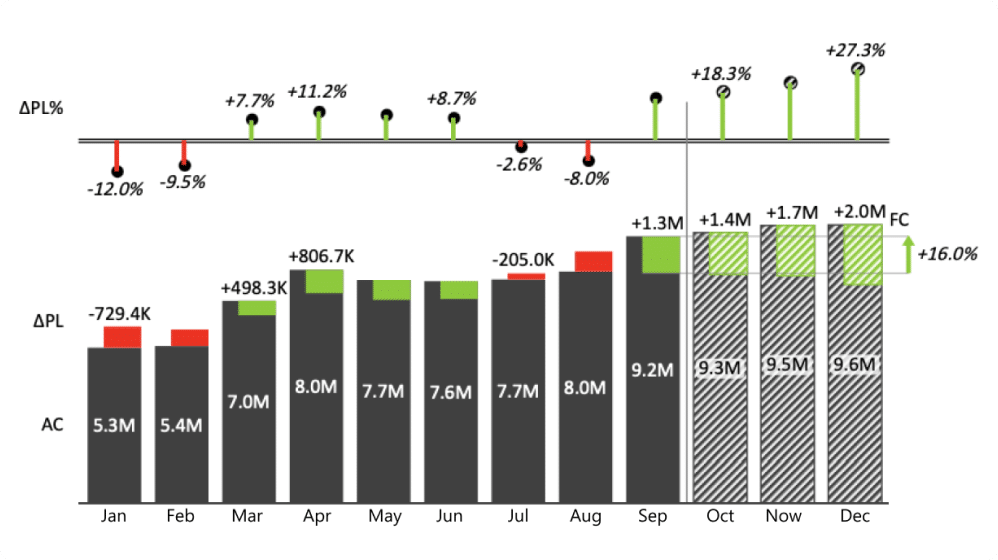
Charting New Territories: How Data Visualization Using AI is Revolutionizing Business Insights
PRO Trial
In an era where data has become the new oil, the art and science of interpreting this complex resource have never been more important. Enter data visualization, the unsung hero of the digital age, transforming inscrutable databases into understandable, actionable insights with powerful tools like Zebra BI. But, even as we speak, this pivotal discipline is undergoing an unprecedented transformation, thanks to Artificial Intelligence (AI). The keyword in today's discussion? Data visualization using AI.
Data visualization is not just about presenting data in a graph or chart; it’s about revealing the stories hidden within the data, the unique narratives that have the power to drive game-changing business decisions. As powerful as that is, AI with its promise of automation and further sophistication, is taking the experience to a whole new level. Capable of analyzing complex datasets in real-time, generating predictive analytics, and even understanding human language, AI is revolutionizing data visualization, making it even more dynamic, interactive, and intelligent.
So where's the AI-powered transformation of data visualization taking us, exactly? Buckle up as we explore how these technologies are reshaping the business landscape and how this will forever change the way you work with data.
The Evolution of Data Visualization
Data visualization has always been at the heart of making sense of information. The traditional methods of data visualization, though limited at first, have been faithful companions in business strategy meetings and boardrooms for centuries. Luckily, we've come a long way from pie charts and bar graphs. Data visualization as we know it can turn unending rows and columns of data into meaningful insights, enabling the decision-makers to easily decipher their patterns and trends.
Artificial intelligence in data visualization emerged as a natural progression in the quest for better data understanding. AI, with its innate capacity to learn and adapt, is bringing a new dimension to data visualization. Powerful reporting & dataviz tools like Zebra BI already have the capacity to automate the analysis of large datasets, churn out actionable insights, and adapt to dynamic data in real-time. But AI presents the promise of taking this a step further, particularly when it comes to understanding the data.
How AI is Revolutionizing Data Visualization
Sophisticated tools like Zebra BI have transformed the landscape of data visualization, automating the analysis of large datasets, generating actionable insights, adapting to dynamic data in real-time, and even diving into predictive and prescriptive analytics. However, the integration of AI in dataviz tools is ushering in a new era, introducing additional features to the domain of data visualization.
In this context, one of the crucial advantages that data visualization using AI brings to the table is the ability to provide written summaries or insights, thanks to natural language processing. Mind you, Zebra BI excels at transforming complex data into comprehensible visual formats. But on top of that, AI brings the option of expressing the data story verbally. This might help users of all skill levels to not just see but read the data, thus enhancing overall data comprehension.

The integration of AI will no doubt extend data visualization capabilities, taking them to unprecedented heights. And this (r)evolution promises to unlock exciting possibilities for businesses around the globe.
The Most Highly Anticipated AI Tools to Change The Game
In the dynamic landscape of data visualization using AI, there are transformative tools emerging that are redefining the ways we understand and engage with data.
Microsoft's Copilot is one such pathbreaker. Having been freshly launched for Power BI on May 23rd, and with an upcoming rollout for Excel and PowerPoint, Copilot is slated to completely change the way we work with data. This AI-powered tool brings its intuitive capabilities to the forefront, with the potential to significantly alter the landscape of data visualization.
Copilot's integration into Power BI has been transformative. It deploys a large language model (LLM) to help users extract insights from data more efficiently than in the native environment pre-AI. Users can simply verbalize their data observations and specify the insights they're after, and Copilot takes care of the rest. This involves generating and editing DAX calculations, constructing narrative summaries, or even answering data queries.
The upcoming integration of Copilot into PowerPoint and Excel is equally exciting. According to Microsoft, Copilot will change the game by assisting with data analysis & the creation of dynamic, data-driven presentations. And we can't wait to see it happen.
Zebra BI and AI: Next-Level Data Visualization
At Zebra BI, we are proud to offer advanced and automated data visualization capabilities that help businesses transform vast datasets into visually engaging and informative reports. Our dedication to equipping you with the best tools to drive data-driven decisions is a core part of our mission. But we're not stopping at where we are. We're always looking forward and pushing boundaries, and right now, that means actively exploring the evolution of data visualization using AI.
Stay tuned for updates on our progress, and get ready to experience the next level of data visualization at Zebra BI. Until then, why not explore a myriad of cutting-edge features that Zebra BI products have to offer? You'll find that they already cover a large majority of functionalities (and then some!) that are only now being released for some other AI-enhanced tools. The best part? You can try them out FOR FREE.
Explore Zebra BI's next-level dataviz capabilities for free
Discover how Zebra BI can streamline your workflow with automated interactive visualizations, automatic variance calculations, predictive forecasting & more! We're talking actionable reports, dashboards and presentations that only take seconds to make & are understandable at a single glance. Now available for Power BI, Excel and PowerPoint.

 September 8th
September 8th February 22nd
February 22nd